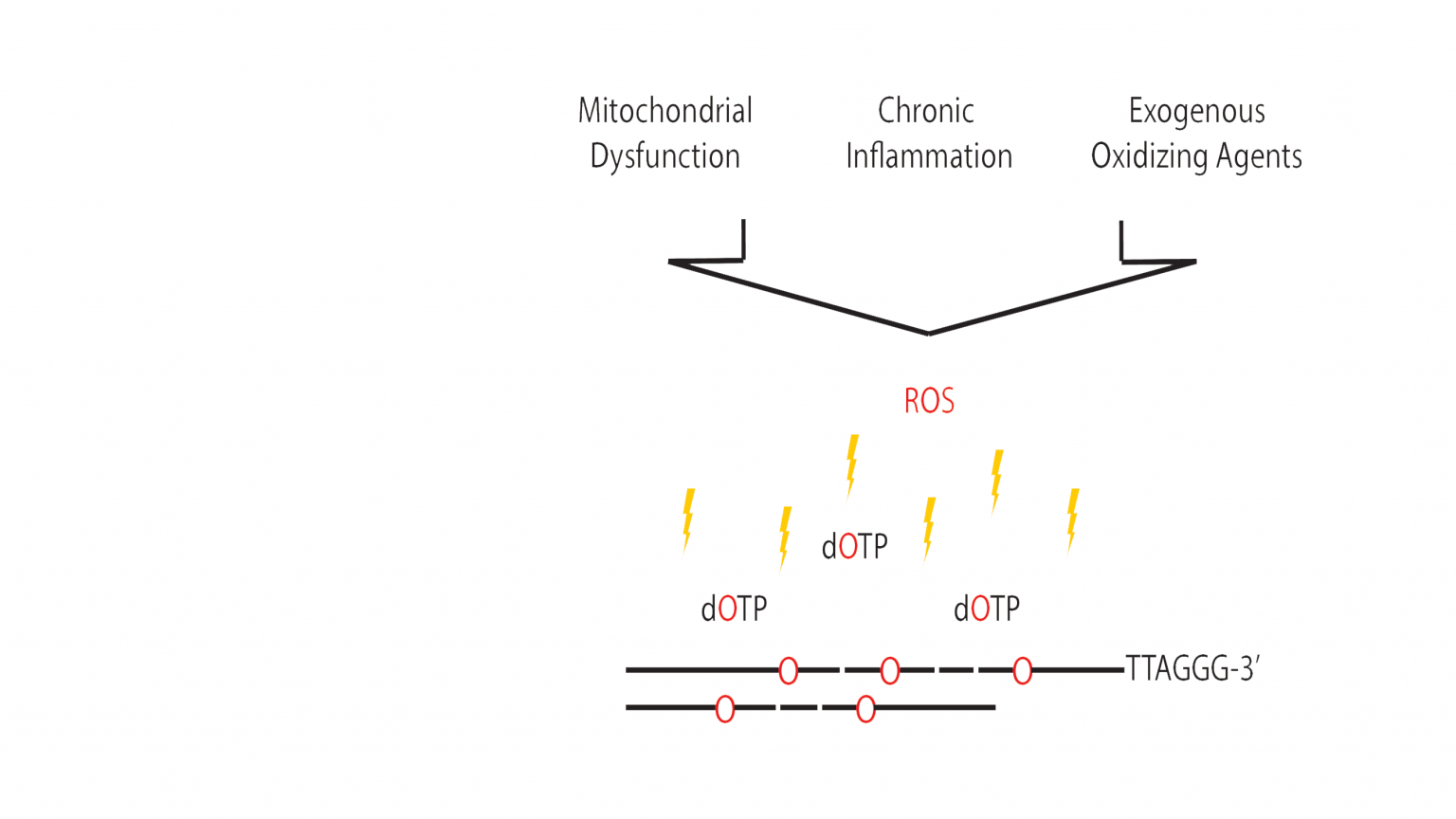Protection of telomeres from oxidative damage
Telomeres are highly susceptible to oxidative damage, contributing to telomere exhaustion in stem cells during aging, which may contribute to age-related tissue exhaustion such as bone marrow failure, muscle loss and others. We discovered that oxidized nucleotides inhibit telomerase activity in cancer cells. Furthermore, we found two enzymes (peroxiredoxin 1 (PRDX1) and 7,8-dihydro-8-oxoguanine triphosphatase (MTH1)) that cooperate to protect telomeres from oxidation. Currently, we are determining the mechanisms of telomere protection from oxidative damage in a comprehensive manner and we explore this knowledge to target telomeres and telomerase in cancer.

| Publications Related to this project |
| Peroxiredoxin 1 Protects Telomeres from Oxidative Damage and Preserves Telomeric DNA for Extension by Telomerase *Aeby E, *Ahmed W, Redon S, Simanis V, Lingner J. Cell Reports. 2016. doi: 10.1016/j.celrep.2016.11.071. PRDX1 and MTH1 cooperate to prevent ROS-mediated inhibition of telomerase Ahmed W, Lingner J. Genes & Development. 2018. doi: 10.1101/gad.313460.118. Impact of oxidative stress on telomere biology Ahmed W, Lingner J. Differentiation. 2018. doi: 10.1016/j.diff.2017.12.002. PRDX1 Counteracts Catastrophic Telomeric Cleavage Events That Are Triggered by DNA Repair Activities Post Oxidative Damage. Ahmed W, Lingner J. Cell Rep. 2020 doi: 10.1016/j.celrep.2020.108347. |